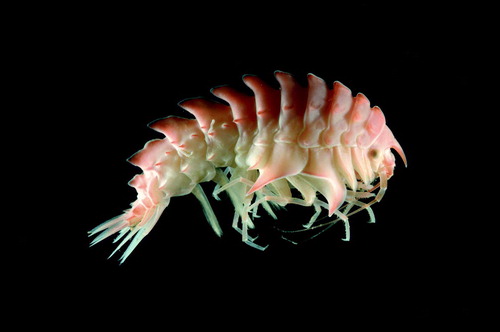Published in collaboration with the University of Bergen and the Institute of Marine Research, Norway, and the Marine Biological Laboratory, University of Copenhagen, Denmark
With this issue, Marine Biology Research has set sail for its third year of publishing high-quality scientific work on marine organisms and habitats. The strong breeze driving the launch of this third volume is very much the result of the successful establishment and consolidation of this journal during the first 2 years, featuring 81 published articles. The effective collaboration of the Editorial Board with the publisher was due to Tore Høisæter and Elin Holm, former Editor-in-Chief and Technical Editor, respectively. They also assisted in implementing and further adapting the electronic manuscript processing and communication system (see http://www.tandf.no/marinebiology): thank you Elin and Tore! Fresh support now comes from the new editorial office at the Institute of Marine Research, Bergen, with Franz Uiblein taking over from Tore Høisæter and Penny Lee Liebig from Elin Holm. To further our ambition of providing a wide coverage of research topics and enhancing scientific quality, new subject editors have been invited. Three of them, Rus Hoelzel (marine mammals), Peter Møller (fish taxonomy and systematics), and Ole S. Tendal (benthos and biogeography), have already started with their duties.
The amphipod Epimeria loricata (Sars, 1879) collected in the Barents Sea during an ecosystem cruise of the Institute of Marine Research (R/V Johan Hjort, September 2006); photographer: David Shale (http://www.davidshale.com).

The year 2007 has been proclaimed as International Polar Year, and this has stimulated increased research activities in both Arctic and Antarctic seas, which represent the most productive and least explored areas on our planet. Research of polar waters will always be an important topic to Marine Biology Research, as the journal is rooted in Scandinavia. Our major goal, however, remains to provide a high-profile communication forum for any globally relevant aspect of marine biology, whether basic or applied, bottom-up or top-down, syn- or autecology, descriptions of new species or large-scale systematic revisions, phenotypically or genetically based comparisons, small- or large-scale distribution patterns, or micro- or macro-evolution. To cope with increasing demands for publishing the results of larger collaborative efforts, some issues will be devoted to specific research themes based on projects and meetings. These “thematic issues” will appear as regular issues, the only difference being that a “thematic issue co-ordinator” will have the responsibility for concerted submission. In addition to original articles, submissions of invited reviews, short reports, and book reviews shall also be encouraged.
Notes
Published in collaboration with the University of Bergen and the Institute of Marine Research, Norway, and the Marine Biological Laboratory, University of Copenhagen, Denmark
References
- Sars , GO . 1879 . Crustacea et Pycnogonida nova in itinere 2do et 3tio expeditionis Norvegicae anno 1877 & 78 collecta (Prodromus descriptionis) . Archiv for Matematikk og Naturvidenskab , 4 : 427 – 76 .